City Theatrical Interview with Lighting Designer Jennifer Schriever
Jennifer Schriever, Lighting Designer
PROFESSIONAL PROFILE
| Name: | Jennifer Schriever | |
| Profession: | Lighting Designer and Adjunct Professor, SUNY Purchase | |
| Experience: | 20 years | |
| Location: | New York, New York | |
| Website: | www.jenschriever.com | |
| Recent Shows: | A Strange Loop (Broadway), Birthday Candles (Broadway Roundabout), Blue Man Group (National Tour), Iphigenia (National Tour) | |
Jennifer Schriever is an NYC-based lighting designer known for her work on live entertainment projects for Broadway shows as well as theatre and opera projects worldwide. Ms. Schriever is Tony Award nominated for her work on A Strange Loop on Broadway, and received the Obie Award Winner for Sustained Excellence in Lighting Design and Obie Award Special Citation for A Strange Loop. She is also nominated for the Russian Golden Mask Award for Lighting Design of Britten’s Midsummer at the Mariinksy Theatre in Saint Petersburg. Ms. Schriever is also an adjunct professor at SUNY Purchase college, where she studied lighting.
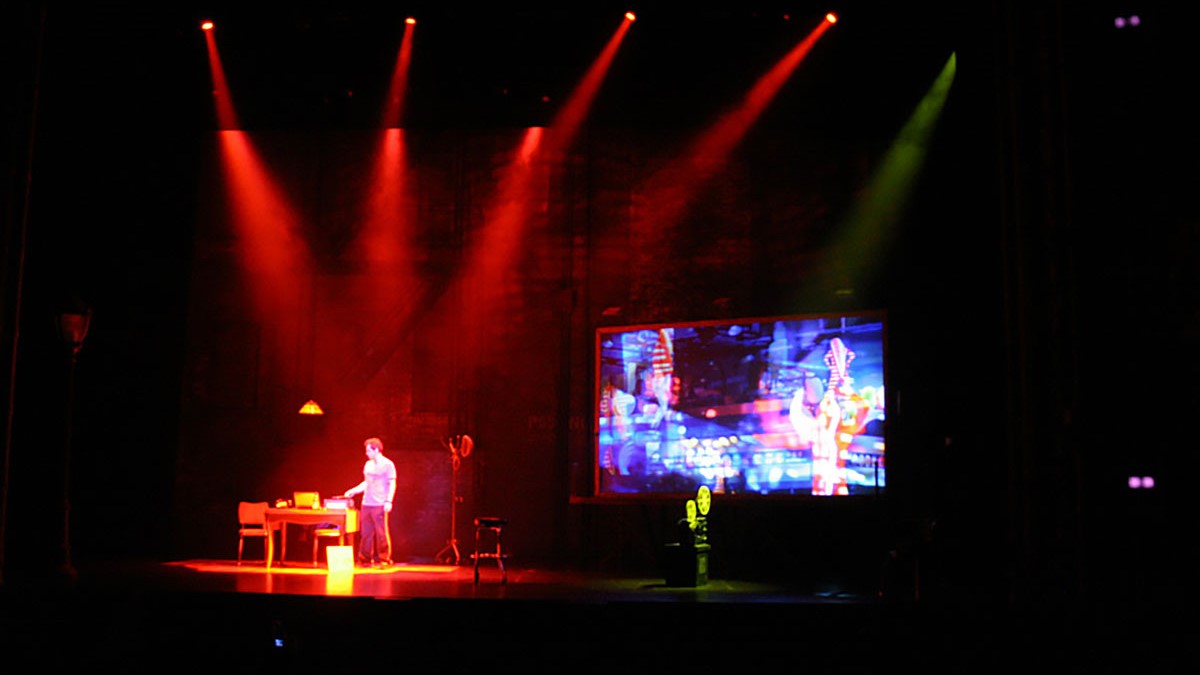
GHETTO KLOWN on Broadway at the Lyceum Theater. Lighting Design by Jen Schriever.
INTERVIEW
City Theatrical (CTI): Jennifer, congratulations on your recent Obie Award Win for Sustained Excellence in Lighting Design and Tony Award nomination for A Strange Loop! How did you find out you were nominated for the Tony, and how did you feel?
Jennifer Schriever (JS): Thank you! I found out about the nomination just like everybody else, by watching the announcement on YouTube. I was in the Delta Sky Club in Boston, waiting to fly home to NYC for a Monday off. I was there waiting to board, weeping. Being nominated felt like everything to me.
I am so happy for all of my colleagues who were nominated, and the award winners.
CTI: A lot has happened in the past two years. Has emerging from the pandemic changed anything about the way you work?
JS: This past season was two years of planned shows that came back together at once. Every designer I know was holding on by the seat of their pants. The pandemic was the craziest time. Then in emerging from that time I received a Tony nomination, which was the most amazing experience. And now I feel like I’m just trying to orbit.
CTI: What is it like to work at the Lyceum Theatre on A Strange Loop?
JS: I did my very first Broadway show at the Lyceum, John Leguizamo’s GHETTO KLOWN, and received my first Tony nom for recent work on A Strange Loop there, so it’s very special place to me. It’s an older theater that has an old-time vibe to it, which I love.
CTI: What are you working on now?
JS: Coming up this fall, I have Death of a Salesman on Broadway opening in October 2022, which I’m very excited about. Also recently worked on 1776 the Musical in Boston, and it will be coming to the Roundabout at the American Airlines Theatre in NYC during September 2022.
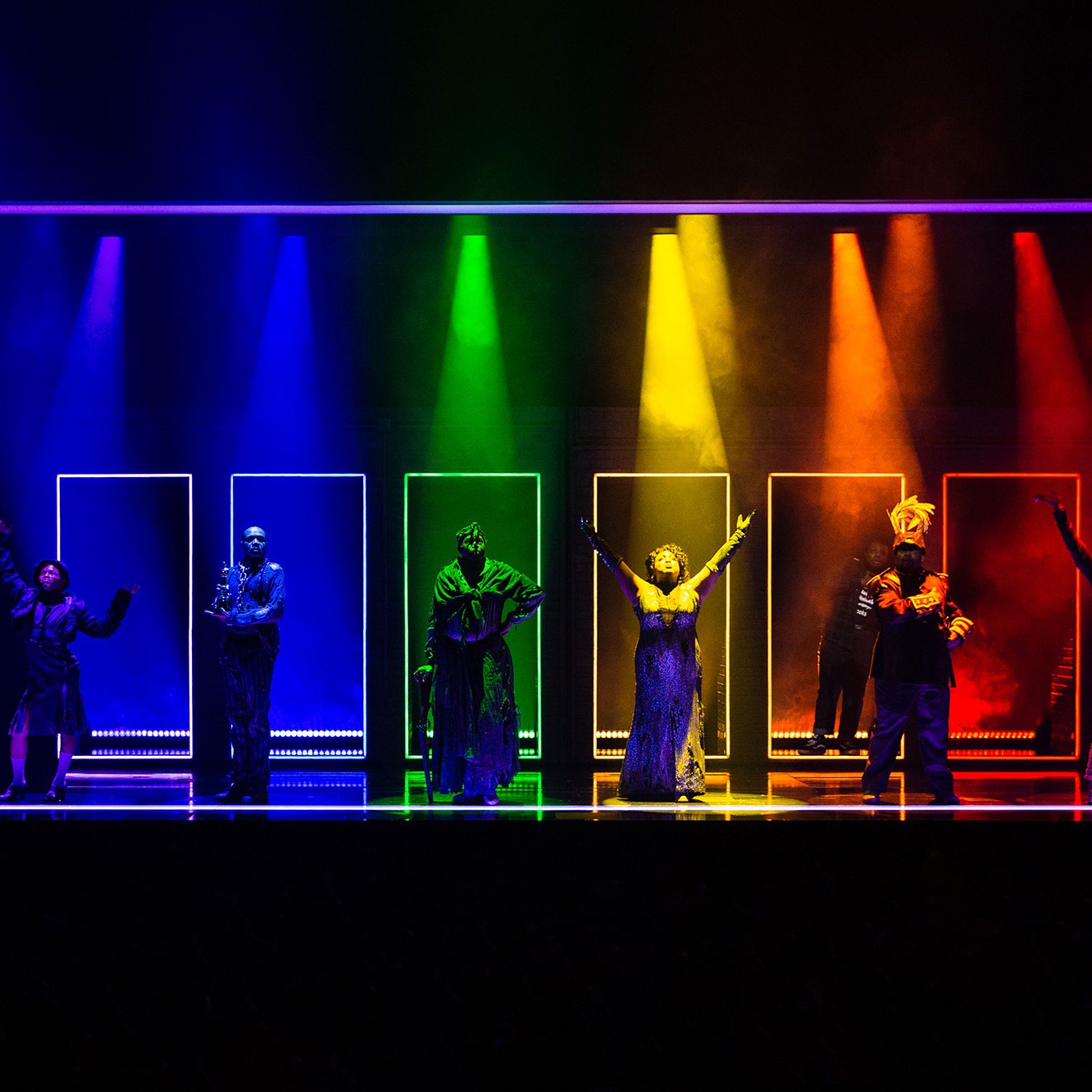
A Strange Loop on Broadway. Photo by Marc J. Franklin.
“This past season was two years of planned shows that came back together at once. Every designer I know was holding on by the seat of their pants. The pandemic was the craziest time. And now I feel like I’m just trying to orbit.”
- Jennifer Schriever, Lighting Designer |
CTI: Now that we are caught up on recent projects, we’re wondering how it all started for you. How did you get started in lighting design for live entertainment?
JS: I grew up in Ridgewood, New Jersey, which is near New York City. I was fortunate to have a lot of early exposure to the arts. My high school there had an exceptional theater program. There was a lighting professional, Jared Saltzman,
who worked at my high school, lighting high school shows, who was also a stagehand at the Meadowlands. He was a real artist. I don’t know if he knew this at the time, but I remember watching what he was doing at my high school, thinking, ‘This
is amazing, I want to do this.’
CTI: Did you always know you wanted to be lighting designer?
JS: In high school, I think I just stumbled into the theater. I signed up for stage crew when I was a freshman. I noticed there were these cool lighting kids, being led by Jared. I would wonder, what are they doing? I would see them
climbing scaffolding, going on the catwalks, and I was amazed. Then I noticed what the light was doing - ‘transporting’ people. I remember they created some magical sunsets on stage. And from there, I knew I wanted to transport people
with light too.
I had a circuitous route, but I always did lighting. I knew I wanted to do it. I had no interest in being on stage. I was so fortunate to have such great mentors backstage.
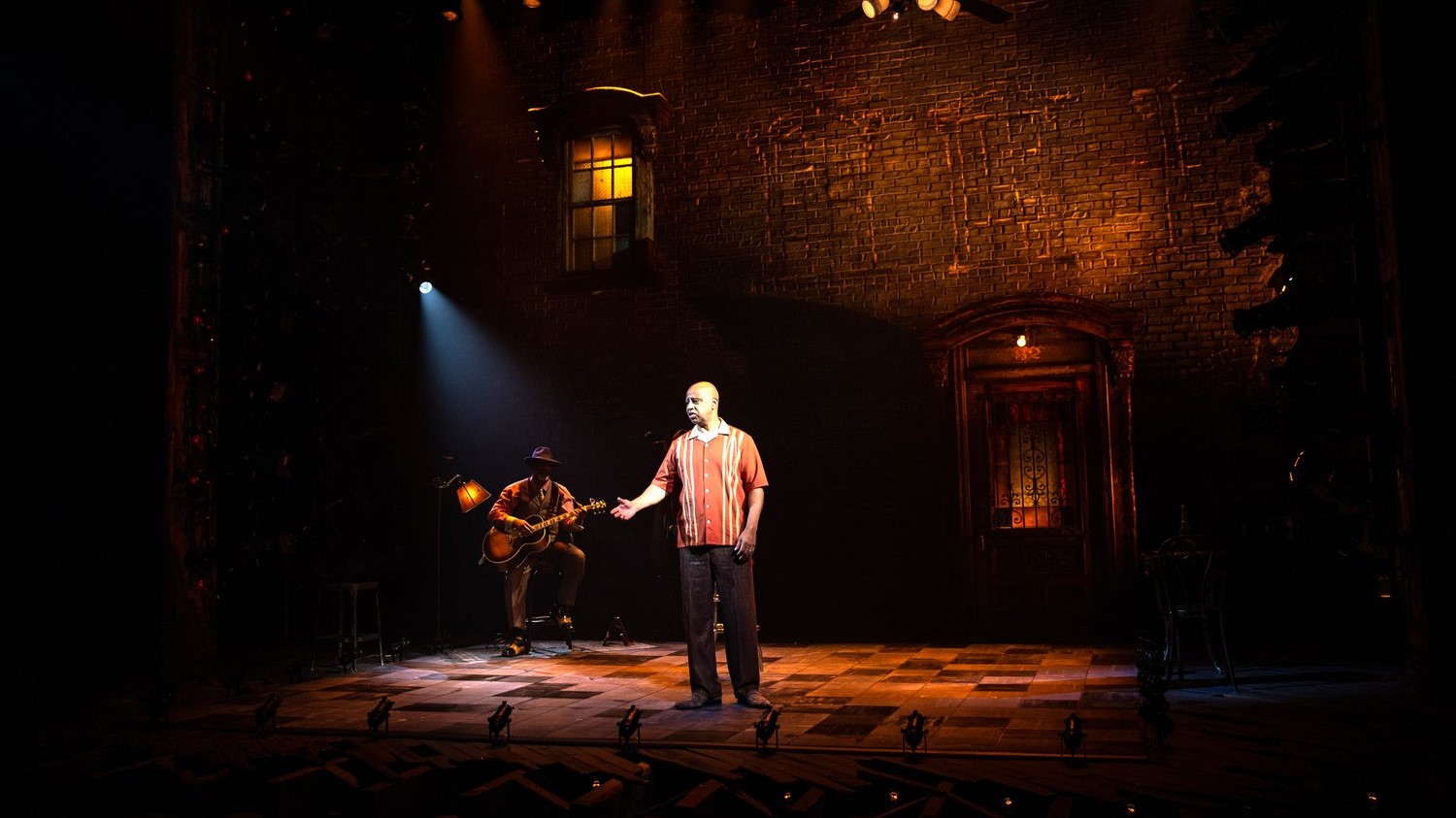
Lackawanna Blues on Broadway at Manhattan Theatre Club. Lighting Design by Jennifer Schriever.
CTI: In terms of your mentors, who/what would you say most influences your design style?
JS: Jared was probably my original mentor.
Then I was fortunate enough to work for Brian MacDevitt, an amazing six-time Tony Award winning lighting designer for Book of Mormon among others, as well as the designer who helped to inspire City Theatrical’s AutoYoke. He took me under his wing. I would say 1,000% Brian is my number one mentor
and greatest influence on my career. I have learned so much from him.
I would also say my current role model is my associate designer, Aaron Tacy. He’s part of a younger generation that is so smart. I’m good at making pretty pictures, but he is just so great at navigating people and the workflow.
I watch him operate in the world and I have learned so much from him. I would say Aaron is my current role model right now, and I’m so thankful that six years ago, he was assigned to my lighting team for a musical at Williamstown.
The associate designer job can be so intimate; you’re in it together to the end. It’s so nice when that person is someone who you not only love, but also challenges you. Aaron is my inspo!
CTI: Are there any women in lighting who have inspired you along the way?
JS: I didn’t know many female lighting designers for a while. Once I started working with Brian, though, I met Natasha Katz, and Jane Cox. They were out there lighting, and since we met, I have always felt like we could talk honestly,
and we still talk. I am thankful for the continued support from Natasha and Jane.
It took me a while to meet the other female lighting designers. I knew they were out there, but I wasn’t meeting other lighting designers because we’re all working separately with other types of designers. In the past few years,
I’ve been fortunate to meet a network of amazing women, many associates, up and coming designers, and fellow designers. Now we talk all the time. I love that my lighting community is tight knit and very supportive.
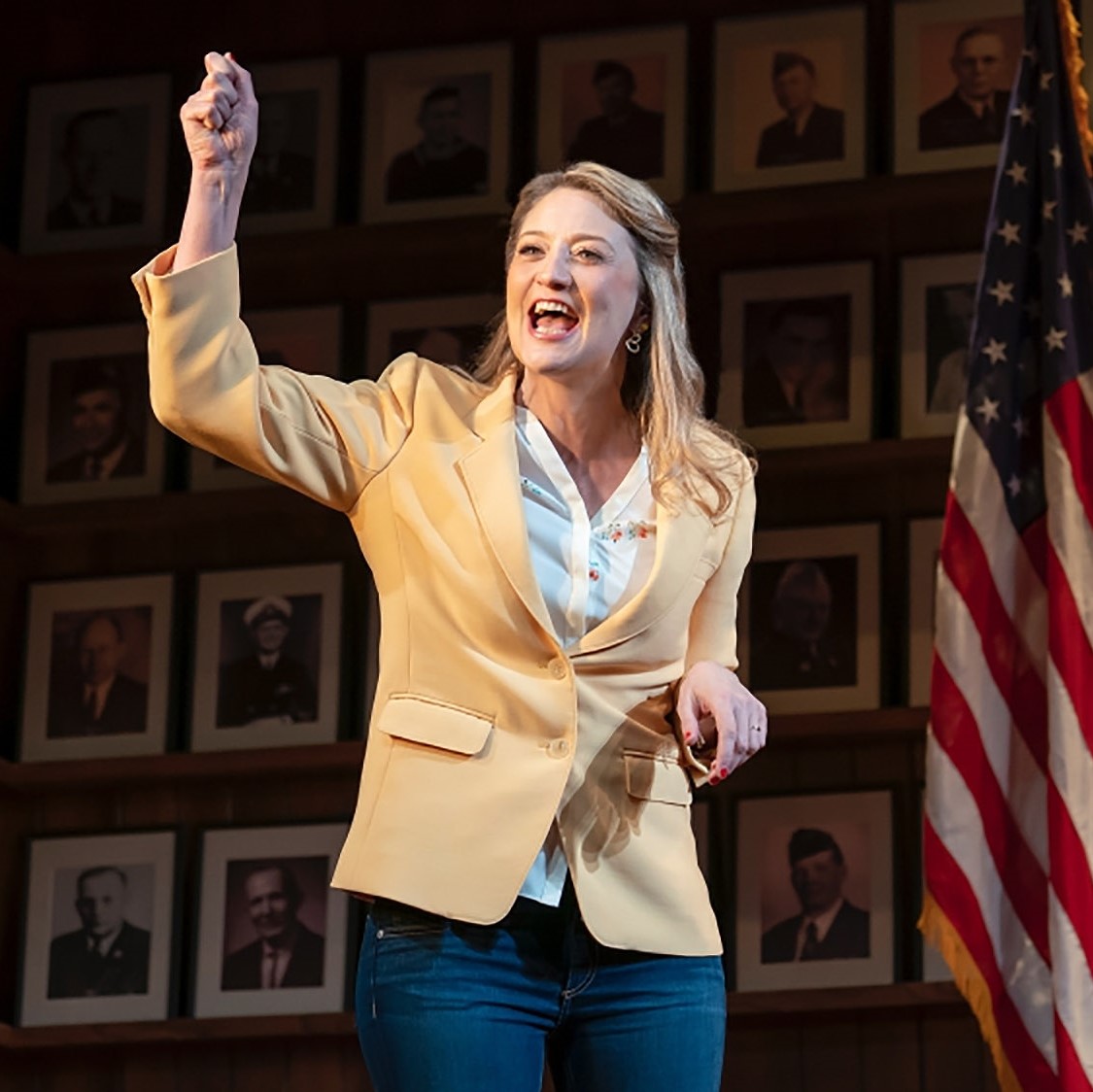
What the Constitution Means to Me on Broadway at the Helen Hayes Theater
“In high school, I think I just stumbled into the theater. Then I noticed what the light was doing - ‘transporting’ people. From there, I knew I wanted to transport people with light too. I had a circuitous route, but I always did lighting. I knew I wanted to do it.”
- Jennifer Schriever, Lighting Designer
CTI: What is it like to work as an adjunct professor at SUNY Purchase?
JS: I went to school at Purchase, and it’s almost been 10 years now working as an adjunct. I like to engage with the students and stay connected. Brian MacDevitt is also a Purchase graduate. There’s this
huge network of Purchase folks. There’s this grit and down to earth determination that the students at Purchase share, and it is so much fun to meet them, work with them, and see them take off in their own careers.
CTI: Can you describe the life of a professional lighting designer?
JS: It’s crazy out there for lighting designers. It is nonstop. I don’t know if there are just more jobs. I just know every designer I know is hustling hardcore right now.
I think lighting designers are dealing with a lot of logistics right now. Finding assistants, staffing shows, finding programmers, making sure that we have coverage, making sure the show is supported due to the pandemic. Even gear is limited
right now.
The life of a lighting designer during this post pandemic year is a lot about logistics. It’s like a puzzle. I like figuring it all out, and the challenge of what is there, and how to make it work.
CTI: What’s your biggest thrill as a designer?
JS: Probably the biggest thrill is the first day in the series of tech when you don’t feel like a hack. Day one, I’m always thinking, what am I doing? I don’t know what I’m doing. I’ve
had so many conversations with lighting designers about this… I think we’re mostly the same in this way. I’m happy this time (and my anxiety over it) has gotten shorter.
When I was younger, I would doubt my ability to pull it off. Now, I know I can do it, just have to get through day one, and we’re going to get there.
So for me, the greatest thrill is the feeling when you’ve cracked the code of the design and you know what it’s going to be. You’ve composed the picture, and it looks amazing. It happens in your mind before you make the
show. Of course, it’s harder to pull off while you’re sitting in the theater altogether and everyone’s waiting for you.
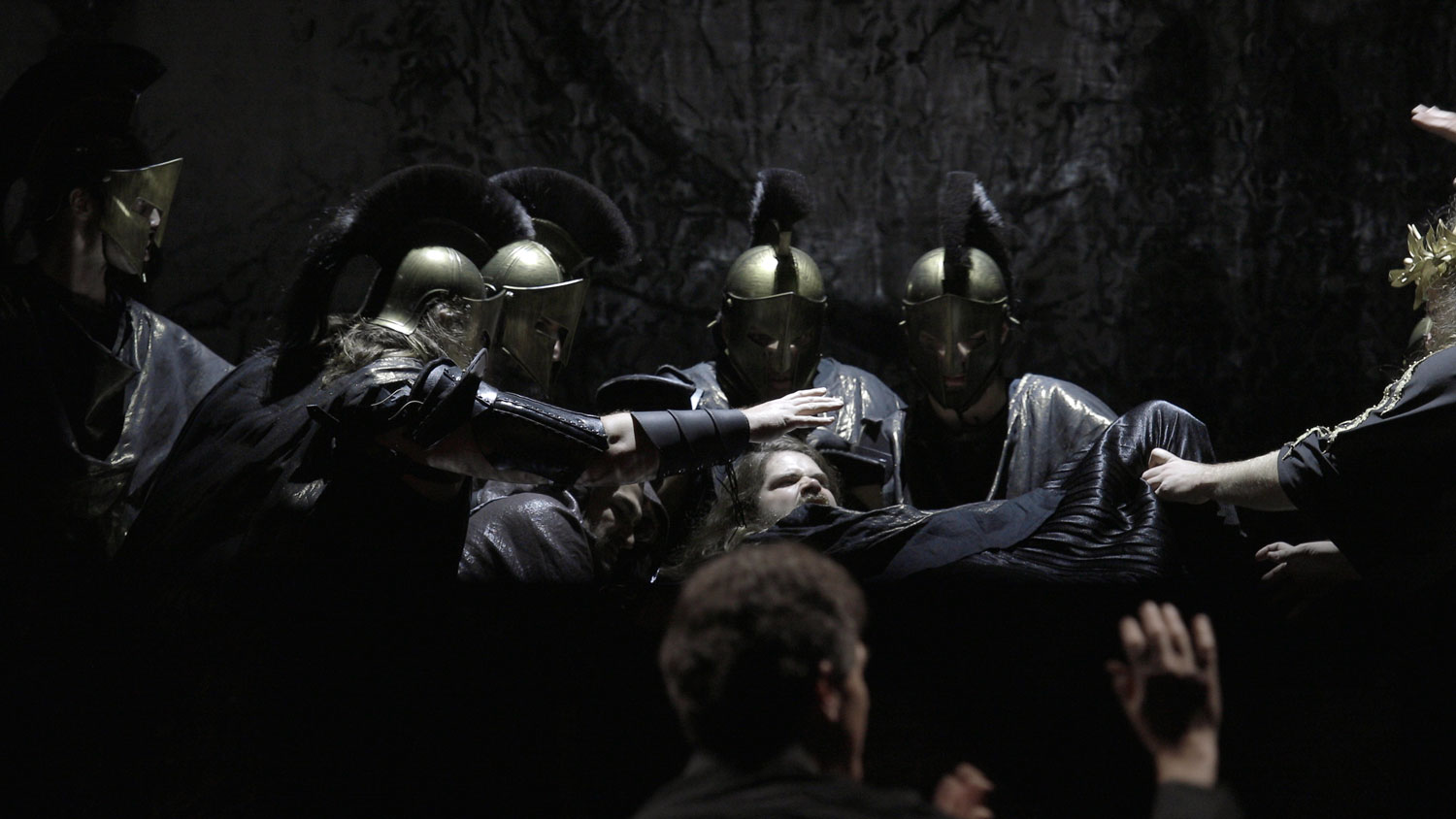
Iphigenia International Tour. Lighting Design by Jen Schriever.
CTI: Are there skills or any areas of knowledge, either lighting related or not, that you hope to develop in the future?
JS: That’s a good question. I’ve always wanted to learn to speak another language fluently. My grandmother was French, and I used to speak French with her. She’s gone now, but I have this fantasy
that I’ll be able to speak French like a native speaker someday. I would also be able to speak Spanish better, to communicate within my local NYC community and beyond.
Otherwise, I would like to learn to continue to work on patience and finding inner peace.
CTI: What’s your process like when you start a new project?
JS: It all depends on the project. It’s all so layered.
Every time something new is starting, something else has happened. It’s rarely a clean sort of process in its own protected shell. Every show gets a different treatment depending on where I’m at on the previous thing.
My biggest goal is to be on the same page with the director and the set designer. It requires a lot of communication because it’s hard to present a lighting design other than in adjectives, and visual research images that are not
going to be literal representations of the lighting on stage. We are always trying to make sure we’re saying the same words, or find the same meaning, for example: is your Moonlight my Moonlight? To see if we’re talking about the same
thing.
I desperately want to unplug. I slowly started deleting all my social over a year ago, and it was one of the greatest things I’ve ever done. I still Instagram, I love the photos, and I love doing visual research with photographs
and paintings to storyboard the 'world of the show' with images.
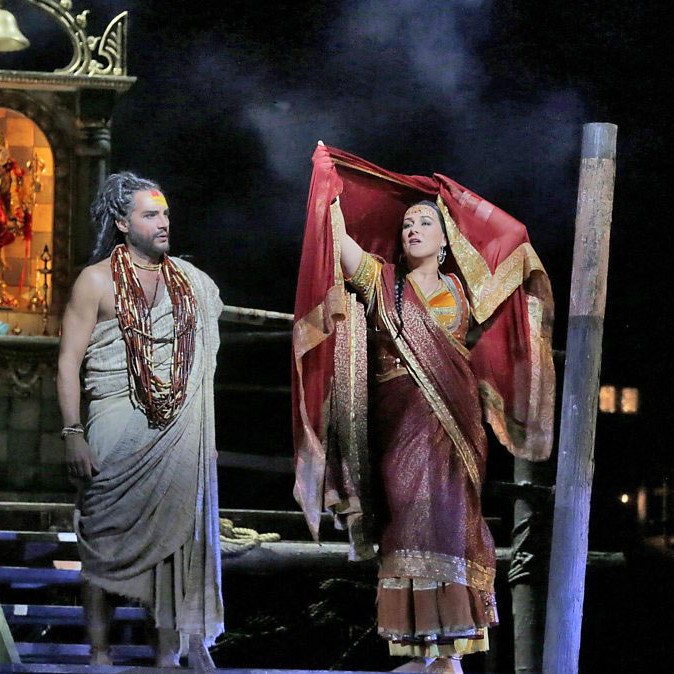
The Pearl Fishers at the Metropolitan Opera
“The greatest thrill is the feeling when you’ve cracked the code of the design and you know what it’s going to be. You’ve composed the picture, and it looks amazing. It happens in your mind before you make the show.”
- Jennifer Schriever, Lighting Designer
CTI: Do you have any favorite projects?
JS: My current favorite project is A Strange Loop. It fired on all cylinders. We all really dug deep. It’s sort of minimal, but also covers all the essentials. The core of everything is developed in
a way that I find really satisfying.
Before that, one of my favorites is an opera I did called The Pearl Fishers, which we teched at the English National Opera (ENO) in London. We had the most amazing collaboration for this show. We had wonderful communications with
the director, and we all knew what was expected on stage. It was a learning experience for me in a good way.
CTI: Thousands of young designers want to do what you do. Besides the artistic ability and technical craft of being a professional designer, what other skills or traits does it take to achieve success in your field?
JS: As lighting designers, we are trapped in rooms with people all the time. In this job, you can’t work in a bubble. I think you have to be able to find joy in being around other people. You have to really
love it. It’s helpful to seek out people with similar interests and find people to work with who you love. I’ve found that projects where we had a great collaboration, and were well thought out, were the shows that were most successful.
There’s a special sauce when you’re all in love with each other like a little show family.
And it’s possible to get yourself inserted into the places you want to be in. You have to have a respectful confidence.
It also takes a while to start making money in this business. You have to really enjoy it, and need it a little bit, in order to do it.
CTI: What is your advice for young lighting designers?
JS: If you want to be a designer, you have to design. I considered being an associate to Brian MacDevitt during my grad school, but I always continued to design. Sometimes in reality, you might be taping up clip lights
and dimmers in a closet, but you’re still making choices as a designer, and interfacing with the director.
Have a money gig. If I had been an associate only, I would be a very different designer today.
Continue designing while doing associate/wrench/festival shows to keep practicing to be a designer. Use safe places to practice designing. I lit high school shows until I was 25. I got to try things, like what if I tried back light here,
etc. Practice your timing, buttons, musical numbers. Keep lighting! Don’t come back to it later. Keep doing it and you’ll get there.
For more information on Jennifer Schriever, visit: www.jenschriever.com
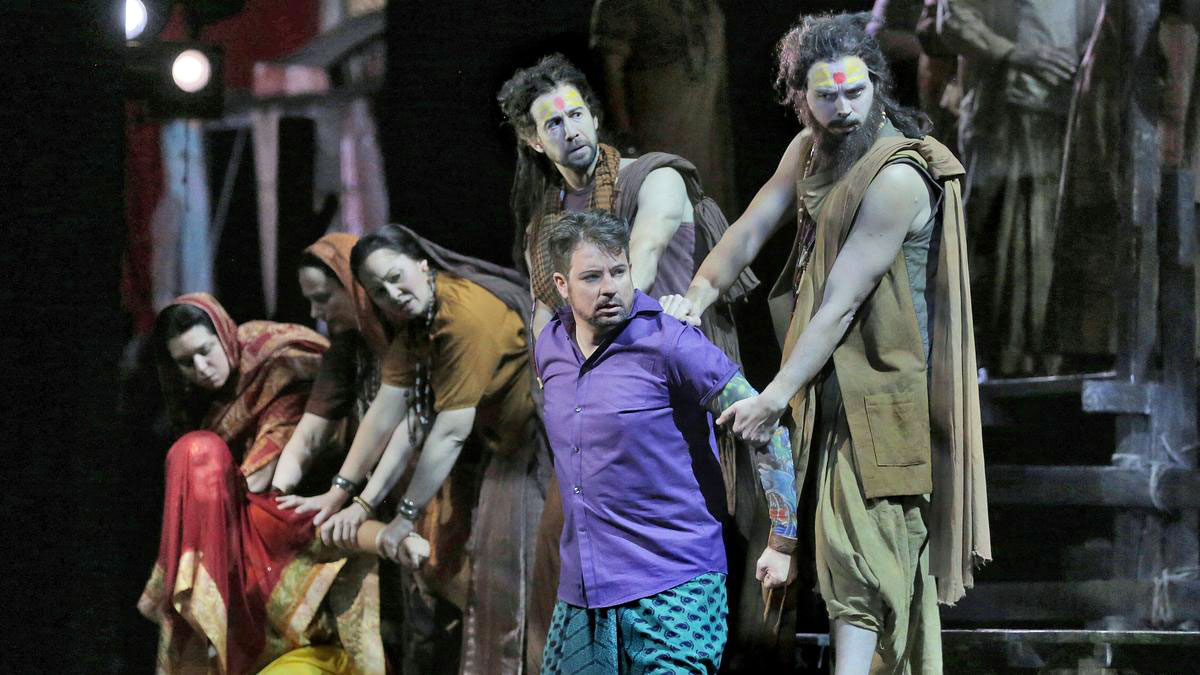
The Pearl Fishers at the Metropolitan Opera. Lighting Design by Jen Schriever.
Want to read this designer interview in print?
View or download this interview as a multi page PDF.
Download Interview PDF